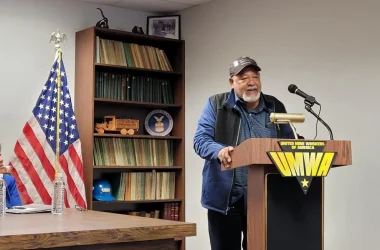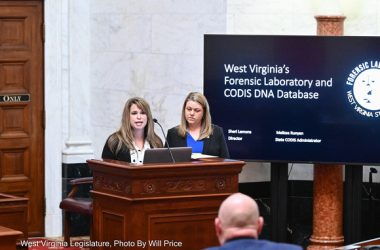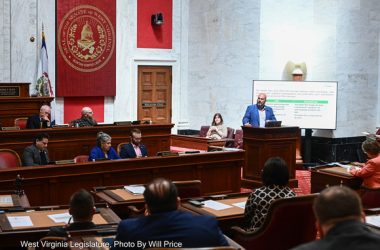By KEN WARD JR.
Charleston Gazette-Mail
CHARLESTON, W.V.A. — As part of a government-wide effort to eliminate regulations, the Trump administration indicated Thursday that the Labor Department would revisit a 3-year-old rule meant to reduce exposure to coal dust that causes deadly black lung disease.
Plans for the re-examination of the rule were outlined in a new regulatory agendapublished by the White House for the Labor Department’s Mine Safety and Health Administration.
Titled, “Regulatory Reform of Existing Standards and Regulations: Retrospective Study of Respirable Coal Mine Dust Rule,” the notice said MSHA would seek ways that the coal-dust rule “could be improved or made more effective or less burdensome.” It said that goal is to accommodate “advances in technology, innovative techniques, or less costly methods,” including whether the dust-control requirements “could be streamlined or replaced in frequency.”
MSHA also would be conducting a “retrospective review” of the rule that was finalized in 2014 to evaluate whether that rule “is achieving respirable dust levels to protect miners’ health,” the regulatory notice said. The agency would be seeking comment from the mining community and the public on its re-evaluation of the dust rule, the regulatory notice said.
The Trump administration’s moves come as researchers are increasingly concernedabout a resurgence in lung disease among coal miners, especially in West Virginia and other Appalachian coal states. Black lung, or coal workers’ pneumoconiosis, is the common name for a collection of debilitating and potentially fatal ailments caused by breathing coal dust.
In 1969, when it passed landmark mine safety legislation, Congress made eliminating black lung a national goal, but between 1968 and 2014, more than 76,000 coal miners nationwide died from the disease.
Safety advocates are especially worried that the most recent research shows black lung affecting younger miners whose entire careers took place after the 1969 law took effect.
The Obama administration rule, put in place by then-MSHA chief Joe Main, aimed to eliminate black lung by lowering legal dust levels, closing loopholes and improving sampling practices.
Efforts to write a tougher set of black lung protections had been stymied for a quarter-century by opposition to particular proposals by one side or another under administrations and Congresses controlled by both political parties. The Obama rule was challenged by the mining industry, but was upheld by a federal appeals court in 2016.
President Donald Trump’s new regulatory agenda was posted online as he held a White House event in which he cut a piece of red tape to symbolize his administration’s success so far in reducing government regulations.
“Let’s cut the red tape, let’s set free our dreams,” Trump said.
In a prepared statement, Labor Secretary Alexander Acosta said, “Today, President Trump made clear the progress his administration is making in bringing common sense to regulations that hold back job creation and prosperity.”
During a Senate confirmation hearing in October, Trump MSHA chief David Zatezalo offered no clear plan for how he would tackle the black-lung crisis, except to say that he hoped an ongoing National Academy of Sciences study might provide some helpful recommendations.
“The increase [in black lung] that’s been discussed is certainly unacceptable,” Zatezalo told the Senate Committee on Health, Education, Labor and Pensions.
The United Mine Workers union didn’t offer any comment on the announced re-examination of the MSHA dust rule.
The National Mining Association said in a statement that, “while we’ve not had any discussions with the agency regarding the retrospective study, we think it might shed valuable information on operation of the rule since its promulgation and ways it might be improved to provide further protection for miners while eliminating unnecessary implementation requirements for operators.”
A spokesman for Murray Energy, West Virginia’s largest coal producer, said the company “is pleased that the Federal Mine Safety and Health Administration is reexamining the Obama administration’s Respirable Dust Rule, which fails to protect coal miners in any way. We will file comments in due course.
Reach Ken Ward Jr. at [email protected], 304-348-1702 or follow @kenwardjr on Twitter.
See more from the Charleston Gazette-Mail





